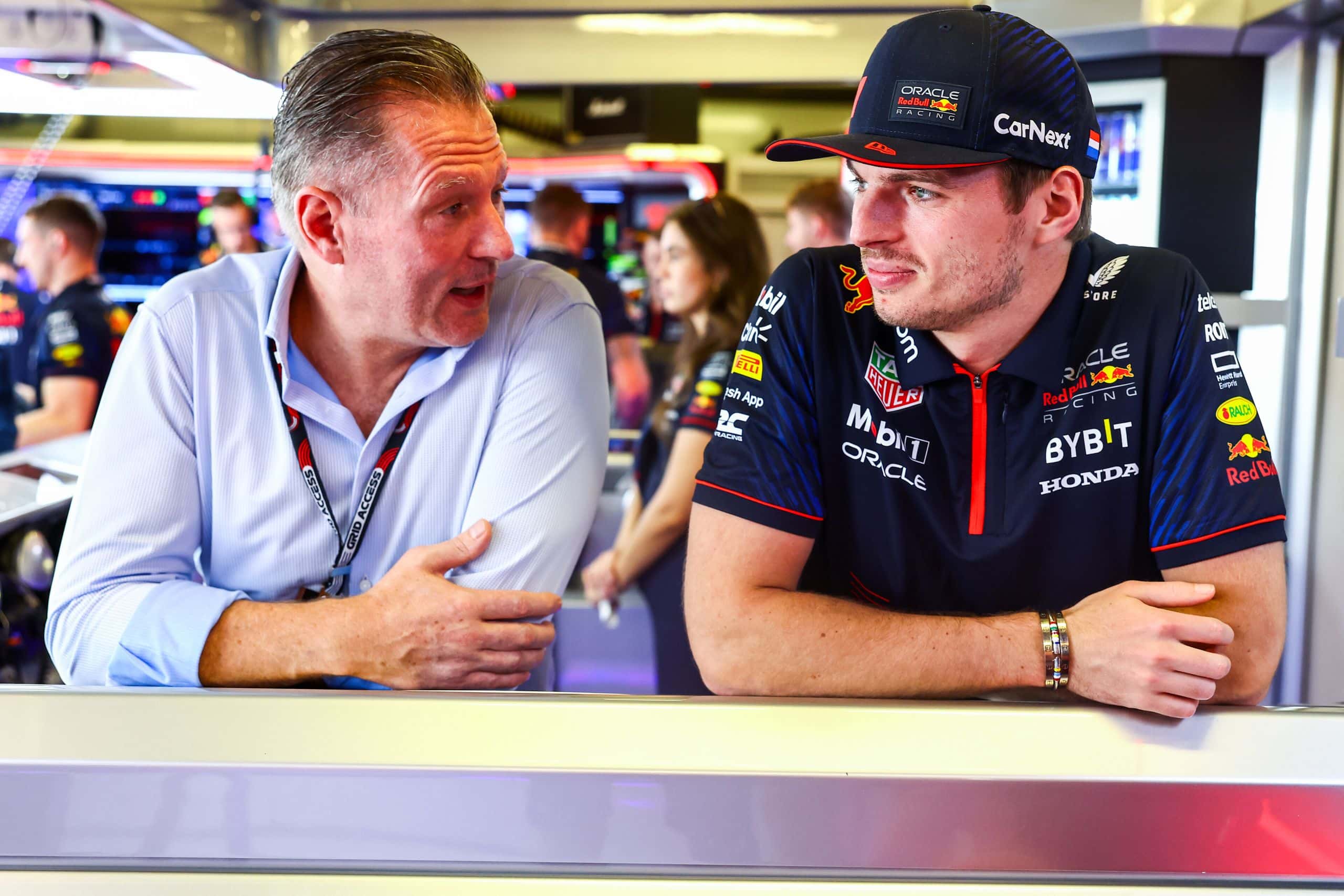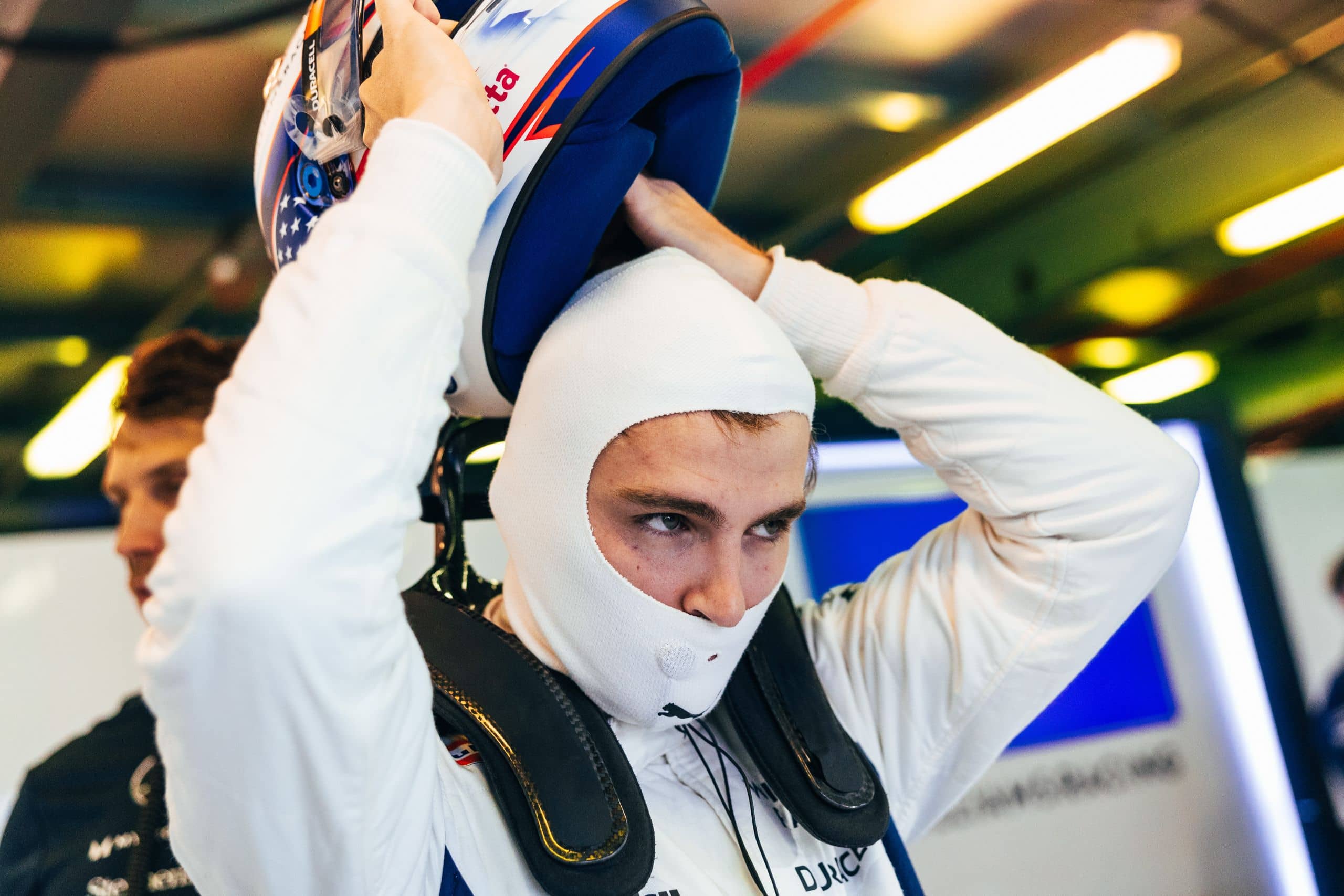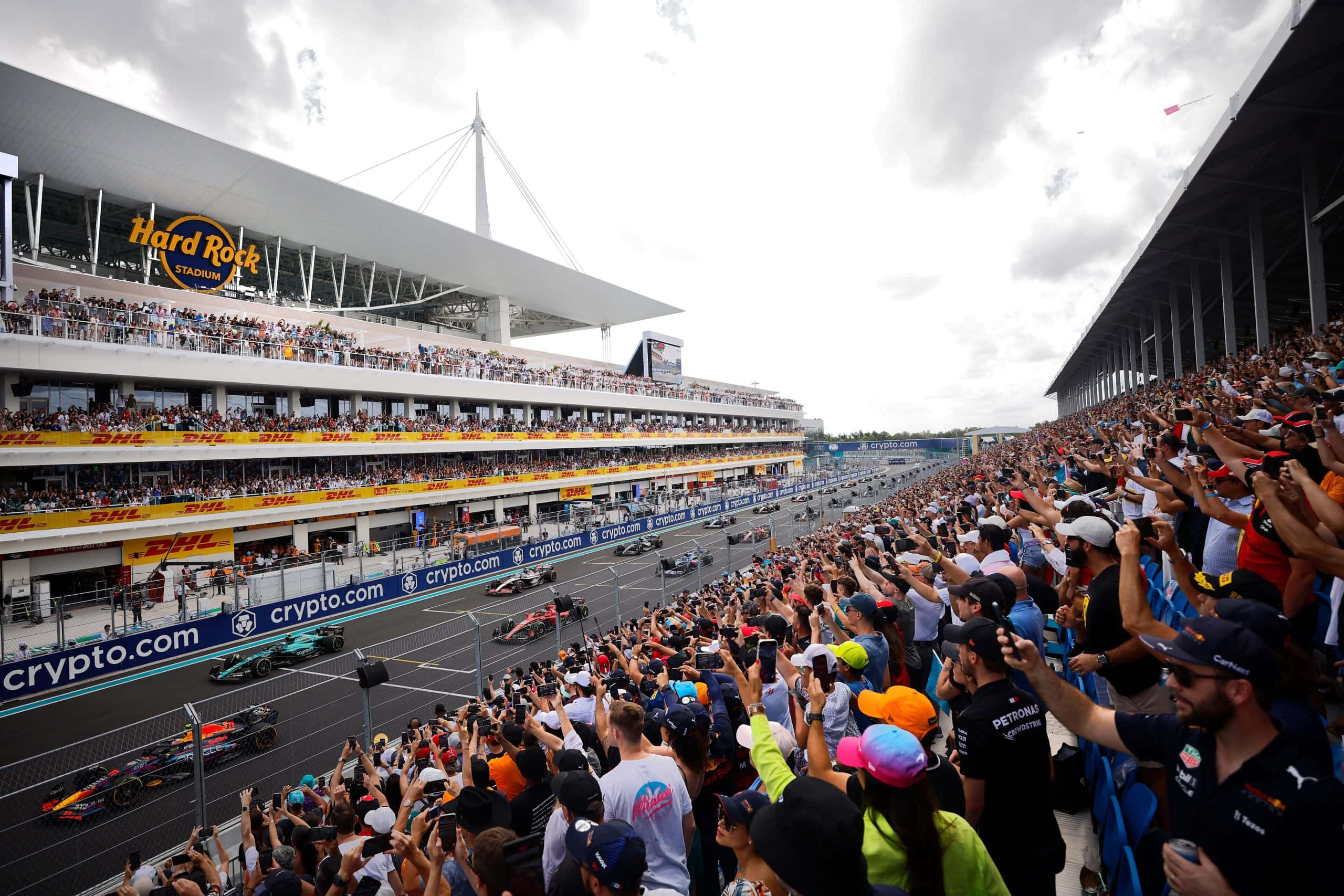What Is Anti-Stall On An F1 Car?
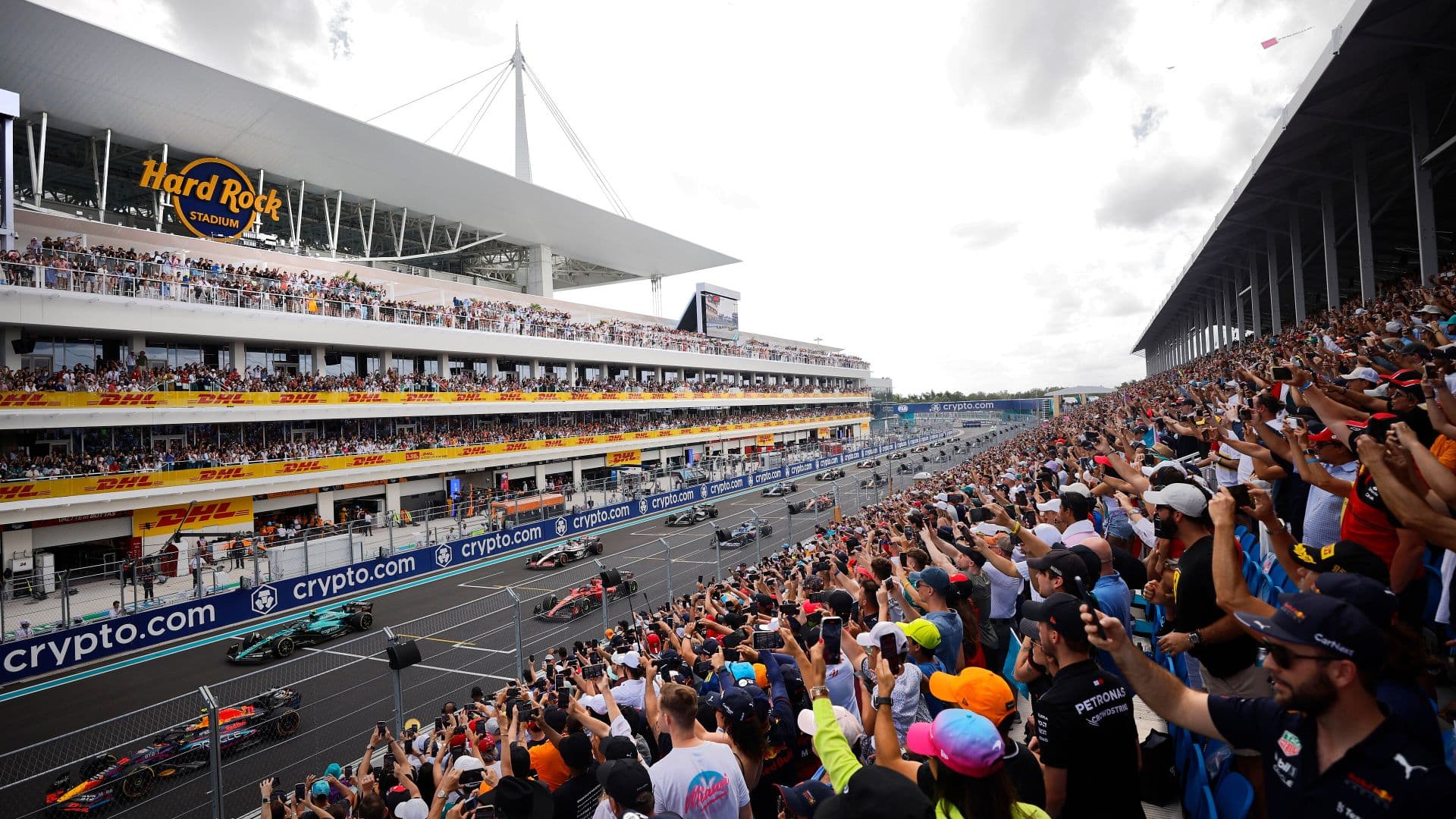
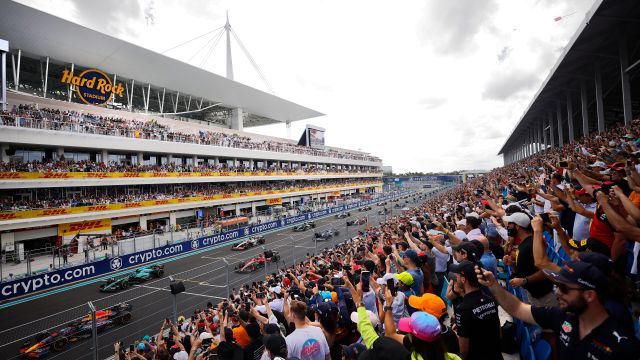
Anti-stall systems are critical components in Formula 1 cars, designed to prevent the engine from stalling during races. Installed in the electronic control unit (ECU) of every F1 car, this technology has stood the test of time, adapting to various rule changes over the years.
Anti-stall is a system used in Formula 1 cars to prevent the engine from stalling when the car comes to a halt or when the revolutions per minute (RPM) drop too low.
F1 cars are highly tuned machines that require complex management to operate efficiently on the track. The anti-stall feature plays a pivotal role in ensuring the vehicle maintains power and can be quickly re-engaged by the driver after an issue. This is crucial since F1 cars do not come equipped with starter motors after the race starts, meaning that a stalled car on the track cannot be restarted without external assistance, which can lead to the end of a driver’s race if they cannot restart the car on their own.
Key Takeaways
- Anti-stall systems prevent engine stalls in Formula 1 cars.
- These systems are integrated into the car’s ECU and have evolved with the sport’s regulations.
- The technology’s primary function is to maintain car performance and enhance driver safety during races.
Understanding Anti-Stall in F1
Anti-stall systems are critical technologies ingrained within Formula 1 vehicles, designed to prevent engine shutdowns during low-rev situations often encountered in races. They are a testament to the intricate fusion of engineering and software management that makes modern motorsport a pinnacle of innovation.
Anti-Stall Fundamentals
Anti-stall technology is a specialized program integrated within the Electronic Control Unit (ECU) of a Formula 1 car to prevent the engine from stalling—when RPMs are too low to maintain engine operation, typically during race starts or after a driver spins. In essence, the system automatically engages the clutch when the engine’s revolutions fall below a certain threshold, allowing the driver time to recover and resume acceleration.
How Anti-Stall Activates:
- Monitoring: Continuously checks engine RPM and driver throttle input.
- Detection: Identifies when RPMs drop dangerously low.
- Engagement: Automatically engages the clutch to neutralize engine load and prevent stalling.
The Role of the ECU and Software
The ECU plays a pivotal role in the functionality of the anti-stall system by orchestrating the engine’s parameters to sustain seamless operation. Embedded software within the ECU dictates the conditions under which the anti-stall protocol is activated.
ECU’s Function in Anti-Stall:
- RPM Surveillance: The ECU precisely monitors real-time engine speed.
- Driver Input Interpretation: Interprets throttle and clutch inputs from the driver.
- Clutch Management: Controls clutch engagement to preemptively avoid engine stalls.
This technology is fundamental in Formula 1 because, unlike consumer vehicles, F1 cars do not have built-in starter motors to restart the engine mid-race. As a result, anti-stall systems are not only convenient but absolutely vital in maintaining the competitiveness and safety of the sport.
Driver Systems and Onboard Management
Modern Formula 1 cars are complex pieces of machinery with sophisticated onboard management systems designed to aid the driver. These systems work in concert to optimize performance and maintain control under various racing conditions.
Clutch and Gearbox Interaction
The interaction between the clutch and gearbox in a Formula 1 car is critical for maintaining smooth power delivery and ensuring rapid gear changes. Drivers use paddles located behind the steering wheel to initiate gear shifts. The clutch, which is also controlled by the electronics, is automatically engaged through the anti-stall system if the car’s revs drop too low, reducing the risk of the engine stalling during critical race moments like starts or spins.
Throttle and Brake Dynamics
The relationship between the throttle and brake systems is essential for effective speed management and traction control. Formula 1 cars are equipped with highly responsive brake-by-wire systems that work in tandem with sophisticated electronics to modulate brake pressure, ensuring optimal stopping power. Conversely, the throttle system is carefully managed by the car’s onboard computers, balancing power output with grip levels to prevent wheel spin and loss of traction.
Understanding Car Performance
Maximizing a Formula 1 car’s performance hinges on precise engine management and tire technology. Each component must work harmoniously to maintain optimal conditions during a race.
Engine and Revs Management
Formula 1 vehicles utilize advanced hybrid turbo engines that are designed to perform at high revolutions per minute (RPM). Effective revs management is critical; it ensures that the engine operates within the ideal RPM range to deliver maximum power without risking damage. The anti-stall system plays a crucial role here by preventing the engine from stalling when the RPM drops too low. It automatically engages the clutch via the onboard computer, allowing the driver to quickly recover and maintain engine momentum.
Tires and Wheel Technologies
Tires are a pivotal aspect of a car’s interaction with the racetrack. They are engineered to provide the necessary grip, and managing wheelspin is essential for maintaining traction. Tires must withstand the stresses of acceleration, braking, and cornering without losing performance. Wheel technologies also contribute to handling dynamics, with innovative materials and designs reducing unsprung weight and aiding in the responsive transfer of power from the engine to the track.
Racing Scenarios and Anti-Stall
Anti-stall systems in Formula 1 cars are pivotal during race start procedures and unexpected incidents during the race, such as spins, where stalling could lead to race-ending situations.
Race Start Procedures
During race starts, the anti-stall system helps prevent a driver’s car from stalling on the grid, which is a crucial moment of the session. Stalling at the start can drop a driver to the back of the pack or even cause a safety hazard on the track. When the revs are too low, which can occur if a driver makes an error with the clutch or throttle, the anti-stall system automatically engages the clutch, giving drivers a chance to recover and bring the engine back to the correct revving range.
Stalling During the Race
In the midst of a Grand Prix, a car might spin off the track due to driver error or contact with another car. The risk of stalling is high if the engine revolutions drop quickly, but the anti-stall system is designed to intervene by automatically engaging the clutch. This safeguard allows racers to keep their engines running, rejoin the race more efficiently, and maintains the safety of the session by reducing the risk of stationary cars on the track.
Technical Regulations and Safety
In Formula 1, technical regulations are strictly enforced to ensure the integrity of the competition and the safety of drivers. These regulations are detailed documents established by the FIA, containing both the legal framework and safety measures, including driver aids such as anti-stall systems.
Formula 1’s Legal Framework
The FIA, or Fédération Internationale de l’Automobile, is the governing body that establishes the legal framework for Formula 1. It regularly updates the Technical Regulations, which all teams must adhere to. These rules not only determine car design and function but also incorporate mandatory safety features. Compliance with these regulations is checked rigorously, and any breach can lead to penalties. Changes to the regulations, such as the 2022 updates, indicate the FIA’s commitment to evolving standards in performance and safety.
Safety Measures and Driver Aids
Safety is a paramount concern in Formula 1, and the regulations encompass various measures to protect drivers. Driver aids, like the anti-stall system, are embedded within these safety measures. Anti-stall is designed to prevent the car’s engine from stalling, which is critical during moments like a sudden deceleration or when the car is stationary. This system is a crucial aspect of the car’s electronic unit, contributing to the drivers’ safety by maintaining control, especially in the starting grid and pit stops. Other safety innovations specified in the regulations include survival cell construction, crash structure specifications, and fire retardancy requirements.

What Is Anti-Stall On An F1 Car? – Frequently Asked Questions
In the high-stakes world of Formula 1 racing, anti-stall systems play a crucial role in maintaining an engine’s momentum during critical phases of a race. They ensure that the vehicle doesn’t stall, which is especially vital when it comes to manual transmissions that could otherwise be susceptible to human error during clutch operation.
Do F1 cars have anti-stall?
Yes, Formula 1 cars are equipped with anti-stall systems. These systems are designed to prevent the car’s engine from stalling when the vehicle is either stationary or moving at very slow speeds, situations that are common during the start of the race or after a driver has made an error on the track.
What does anti engine stall do?
An anti engine stall system automatically controls the car’s clutch and throttle inputs to prevent the engine from losing momentum and stalling. When it detects a potential stall situation, it adjusts the engine parameters to maintain idle speed and keep the engine running, which is essential for a Formula 1 car that lacks an onboard starter motor.
What is the role of the clutch in anti-stall systems for manual transmission F1 cars?
The clutch in manual transmission F1 cars is integral to the anti-stall system’s function. It works by briefly disengaging the engine from the transmission when a stall is imminent, allowing the engine to regain its revs without interruption. This automated clutch engagement and disengagement process is crucial, as it enables the driver to focus on racing without worrying about manually preventing a stall.

